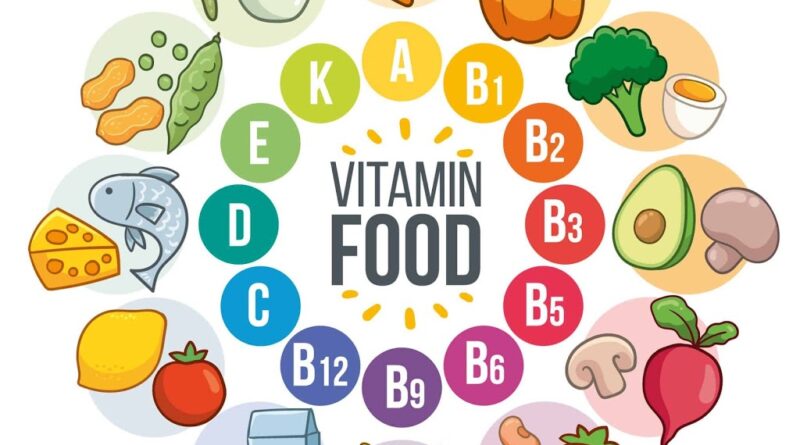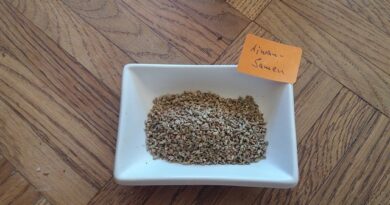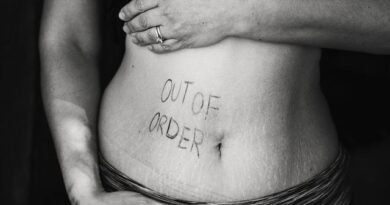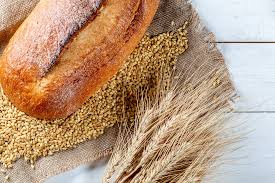13 VITAMINS AT A GLANCE
13 VITAMINS AT A GLANCE
.
What are Vitamins?
.
Vitamins are organic compounds that the body itself cannot produce, or only in significant amounts. Due to their chemical properties, vitamins are divided into fat-soluble (vitamins A, D, E and K) and water-soluble (vitamin B, C) vitamins.
How many vitamins does a person need?
.
Vitamins are mainly needed for physiological processes. In addition to the constitutional conditions, the demand depends on the sex, the age, the season, the amount of energy supplied, various environmental influences and hormonal influences. Especially in pregnant women or in lactation, the vitamin requirement is increased. Sick people should also pay attention to a higher intake of vitamins. Vitamin supplements should be taken with care.
In order to meet your vitamin requirements, one should first pay attention to the original content of vitamins in the food. But the correct preparation of food also plays a major role. Generally speaking, storage and preservation reduce the vitamin content.
13 VITAMINS AT A GLANCE
.
Vitamin A
Vitamin A (retinol) is probably most known for its positive effects on vision. However, it also protects the skin and is responsible for healthy cell growth. Vitamin A also strengthens the immune system and builds up cartilage tissue. Vitamin A suppliers include liver, cheese, eggs and milk. A deficiency leads to night blindness and vision problems. There may also be growth delays and bone thickening. In case of overdose, however, fatigue and dry skin are not uncommon. Since vitamin A is fat-soluble, the body can only absorb it together with fat (e.g. drinking milk).
The precursor to vitamin A is beta-carotene, also called provitamin A. From this, the body builds vitamin A if necessary. The best source of beta-carotene is usually red, yellow and green vegetables and fruits. So peppers, carrots, leafy vegetables, but also herbs and apricots. Beta-carotene can even colour the skin orange and should not be overdosed by smokers.
Search Jobs – Click Here
Vitamin B1
Vitamin B1 (thiamine) aids in the function of cell and carbohydrate metabolism. It promotes the transmission of nerve commands to the muscles, forms collagen and is also important for the breakdown of certain amino acids. Too little of this vitamin leads to fatigue, loss of appetite and indigestion. Smokers and pregnant women in particular should pay attention to a sufficient intake. In case of overdose, redness of the skin may occur. Vitamin B1 is found in whole grains, legumes and meat.
Vitamin B2
Vitamin B2 (riboflavin) regulates cell and energy metabolism in the body and helps to break down the atherosclerosis risk factor homocysteine. Vitamin B2 is found in animal foods, cereals (seedlings), leafy vegetables and milk. Deficiency can lead to dry skin and corners of the mouth, reddened eyes, fatigue and even depression. Many common slimming cures lead to an under supply of this important vitamin.
Vitamin B3
Vitamin B3 (niacin) is not actually a vitamin, but is still included in the B group. It is part of enzymes and essential for metabolism, skin and nerves, cholesterol levels and the formation of neurotransmitters. In the case of a deficiency, the affected person has scaly skin, brittle lips and blankets, is irritable and often suffers from depression. Vitamin B3 sources are animal foods, legumes, cereals milk and leafy vegetables.
Vitamin B5
Vitamin B5 (pantothenic acid) Pantothenic comes from Greek and means “everywhere”. It is involved in the formation of blood, cortisone, hormones, vitamin D & Q 10 and also promotes wound healing. In ointments, pantothenic acid even helps against sunburn. Rich in pantothenic acid are liver, kidney, yeast, egg yolk, legumes and whole grains. Overdose can lead to headaches, itching and nausea.
Vitamin B6
Vitamin B6 (pyridoxine) regulates blood sugar levels and affects the nervous and hormonal system. It is involved in protein fat and energy metabolism, transports oxygen and detoxifies the body of homocysteine. Deficiency can lead to diarrhoea and vomiting. Especially pregnant women, women who take the pill and smokers should pay attention to a sufficient intake. Vitamin B6 is contained in almost all animal and plant foods.
Vitamin B9
Vitamin B9 (folic acid) is also called the “good mood vitamin” and belongs to the vitamins of the B group. The effects range from blood formation, detoxification of homocysteine to the synthesis of serotonin and norepinephrine. Consequences of a deficiency are irritability, insomnia, as well as lack of concentration and susceptibility to infection. Especially in pregnancy, a deficiency can have devastating consequences and lead to a malformation of the embryo. Therefore eat lots of liver, spinach, salad, eggs, asparagus and legumes.
Vitamin B12
Vitamin B12 (cobalamin) has an influence on folic acid, fat and amino acid metabolism. It helps in the formation of red blood cells and detoxifies the body like the vitamin B3 of homocysteine. Too little of this vitamin can lead to anaemia and cell division in the bone marrow. But also depression, pallor and brittle nails are symptoms of deficiency. So eat enough animal and fermented food and do not let in any deficiency at all. The body can store vitamin B12 in the liver and muscles and form a reserve of 3 years.
Vitamin C
Vitamin C (ascorbic acid) is, so to speak, the king among vitamins and is essential for a good immune system. It produces hormones and neurotransmitters and promotes the breakdown of cholesterol. Vitamin C also increases iron absorption and is responsible for iron metabolism. Unfortunately, vitamin C cannot be stored by the body. Deficiency leads to delayed wound healing, bleeding of the skin, mucous membrane and internal organs and increased risk of infarction. Vitamin C is contained in fruits, vegetables, potatoes and herbs.
Vitamin D
Vitamin D (calciferol) – This is actually a hormone precursor, which can be stored in fat and muscle tissue. It supports healthy bones and teeth, controls calcium phosphate recovery, strengthens the immune system and supports cell growth. Deficiency symptoms lead to bone loss, hearing and muscle weakness. Therefore, fat fish such as salmon and herring should be on the menu. But liver and egg yolks are also rich in vitamin D.
Vitamin E
Vitamin E (tocopherol) is a collective name for 8 vitamins that perform the same functions and differ only in their chemical structure and effectiveness. It serves as oxidation protection for the body, has an anti-inflammatory effect and protects against atherosclerosis. Vitamin E can also improve stamina and increase fertility. A deficiency, on the other hand, leads to age spots, weakness in muscle and concentration, and an increased risk of developing cancer. Good sources of vitamin E are vegetable oils (e.g. sunflower oil), nuts and seeds (e.g. flaxseeds).
Vitamin H
Vitamin H (biotin) owes its name to its positive effect on skin and hair. But it can do even more: it lowers blood sugar and supports the nervous system and bone marrow. Deficiency leads to hair loss, brittle nails, muscle pain, anaemia and disorders of fat metabolism. Liver, egg yolks, legumes, yeast, nuts and milk help prevent these symptoms from occurring.
Vitamin K
Vitamin K (Phylloquinone and Menaquinone) – These are the two vitamins K1 (ingested through food) and K2 (formed in the intestine). The duo is responsible for blood clotting and bone metabolism and protects the heart from plaque formation. Vitamin K is also important for healthy teeth and liver. If there is not enough in the body, there may be bleeding of the nose and gums, or bruising and menstrual problems.
FAQs
Does vitamin C help grow hair?
Effect on the hair: Vitamin C promotes blood circulation to the scalp. Since the vitamin also increases the bioavailability of iron, it can support the metabolism at the hair roots.
Which vitamin is missing in case of hair loss?
Iron deficiency is widespread worldwide, especially among women. B-vitamins biotin is said to increase hair growth and ensure healthy hair and nails. Zinc – This vital trace element is involved in the formation of keratin and is therefore important for the hair.
Why is vitamin B12 so important?
In the long run, irreparable damage to the nervous system can occur due to the lack of cobalamin. Especially in the elderly, memory loss and dementia are associated with vitamin B12 undersupply.
What happens if you take too much vitamin?
The body fights against an overdose with vomiting, diarrhoea and headaches. If you take too much vitamin D over a long period of time, you have to reckon with deposits in vessels and organs as well as kidney damage. The risk of pancreatic cancer may also increase.
Are too many B vitamins harmful?
Long-term, high-dose intake of certain vitamin B supplements increases the risk of lung cancer in men. Taking vitamin B6 and vitamin B12 is particularly dangerous for smokers, researchers report.
.
Natural Beauty Tips – Beauty Tips
.
Search Jobs – CLICK HERE
.
Read Also :
.





